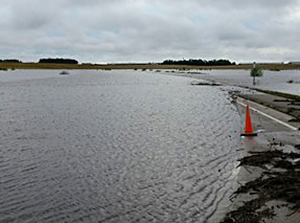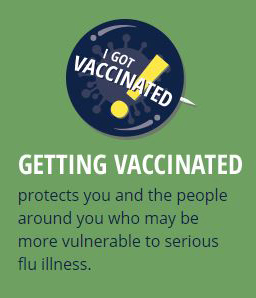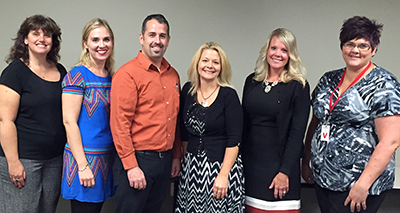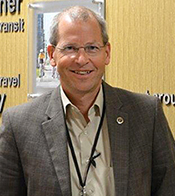 |
|

|
 |
TABLE of CONTENTS
 |
Heavy rains cause flash flooding across Twin Cities, southern Minnesota |
By Rich Kemp

Heavy rains caused flash flood waters to fill Hwy 14 in Waseca Sept. 21, closing the road for two days. Photo courtesy of District 7 |
With as much as 8 to 10 inches of rain in a few hours Sept. 21, widespread flash flooding occurred across the Twin Cities and southern Minnesota. Flash floods are the most dangerous kind of floods because they combine the destructive power of a flood with incredible speed and unpredictability, and can happen with no warning, according to the National Severe Storms Laboratory.
MnDOT showed that snowplows can be used for more than plowing snow. Plows were used to clear water off of eastbound Interstate 694 near Maple Grove during the early morning of Sept. 22.
For Waseca, it was the second night of deluges in a row, bringing the 48-hour total to 13.91 inches, the Weather Service said Thursday morning, Sept. 22.
“Rain came so rapidly and normal drainage couldn’t handle it,” said Jed Falgren, District 7 maintenance engineer. “That is the first time I have seen Hwy 14 go under water in Waseca and Janesville.”

Graphic shows what can happen during a flash flood. Graphic created by Adam Oie |
In addition to Hwy 14, more than 15 roads were closed in the Twin Cities and southern Minnesota. Many of the roads were closed for several days. The southbound lane of Hwy 43 near Choice was closed after the water subsided, so MnDOT crews could repair the road.
Maintenance and sign crews were busy putting up barricades and signs to close the roads. Bridge crews worked in the rivers, log jamming and scour monitoring. Mudslides also kept MnDOT crews busy removing mud from the Hwy 169 project from St. Peter to Mankato.
The majority of the roads were open by Sept. 27. Hwy 65 in Albert Lea was the last to open, with the westbound lanes opening Oct. 5.
“We appreciate and thank our employees for monitoring the situation and for the getting the roads open as soon as possible,” said Falgren.
Video of a MnDOT snowplow clearing water from Interstate 694 in Maple Grove Sept. 22. Video courtesy of the Regional Transportation Management Center |
|
 |
|

|
 |
TABLE of CONTENTS
 |
Students, parents from around Minnesota participate in Walk and Bike to School Day |

Students and parents from Hiawatha Elementary School in Minneapolis walked to school Oct. 5 to celebrate Walk and Bike to School Day. The annual event encourages students and parents to teach pedestrian and bicycle safety, reduces traffic congestion and strengthens connections between families, schools and communities. Photo by Dave Cowan |
|
 |
|

|
 |
TABLE of CONTENTS
 |
Steel from I-90 Dresbach Bridge donated to Purdue University engineering lab |
|
By Mike Dougherty, District 6 public affairs coordinator

Pieces from the old Dresbach Bridge were erected at the Purdue University S-BRITE Center to support academic and professional training. Photo courtesy of the S-BRITE Center |
Portions of steel from the old Dresbach Bridge are now at an engineering research laboratory at Purdue University.
Ames Construction, the contractor for the Dresbach Bridge project, in a cooperative effort between the Minnesota and Wisconsin departments of transportation, donated the steel and coordinated the loading and shipping of the steel to the S-BRITE Center, Bowen Lab at Purdue University in West Lafayette, Ind.
“This bridge component request came a couple of months ago,” said Kevin Western, state bridge engineer. “I talked to Jerry Volz, the Ames project engineer, about having a section of the old bridge salvaged. He worked with District 6 project staff and his team to make it happen. This is partnering at its finest.”
Main girders from the bridge, which are 21-feet-10-inches tall, and another assembly 10-feet long and approximately 10-feet wide, were given to the group for its research efforts. The pieces were erected recently at the S-BRITE Center, which has been collecting bridge sections coming out of service for its Bridge Component Gallery to support academic and professional training.
Girder sections like the Dresbach Bridge are rare because of their size, but in this case, these girders have also had past retrofits implemented to modify their connections to help prevent a phenomenon called "constraint-induced fracture."
“This is a powerful teaching tool to help professional engineers, bridge inspectors, and engineering students understand these important concepts,” said Robert Connor, director of the S-BRITE Center. “When we can educate students and professionals on these types of details and good practices for repair and retrofit, then we help the steel bridge community better maintain the aging infrastructure.”
The use of the steel is one of many ways materials are recycled from construction sites, said Western. Much of the concrete, blacktop and steel finds its way to new uses through recycling or future construction work. A MnDOT graphic highlighting the re-use of material at the Dresbach Bridge can be seen at www.mndot.gov/dresbachbridge.
The Dresbach Bridge project includes constructing a new I-90 crossing over the Mississippi River and reconstructing the Hwy 61/14 and the I-90 interchange.
“We have a few other unique MnDOT pieces at the facility; an Interstate 35W Bridge gusset plate and the section of cracked girder from the Lafayette Bridge,” said Western. “This is a training experience for our nation’s future inspection leaders, being able to see and feel these preserved elements at this facility.” |
 |
|

|
 |
TABLE of CONTENTS
 |
Tribes, Census Bureau, MnDOT sign Memorandum of Understanding |
By Mandi Lighthizer-Schmidt, District 8 public affairs coordinator

Signing the Memorandum of Understanding during a signing ceremony between the U.S Census Bureau, MnDOT, and the tribes were (from left) Tim Henkel, assistant commissioner of Modal Planning and Program Management; Marisa Anywaush, Upper Sioux Community vice-chairwoman; and Greg Hanks, U.S. Census Bureau deputy division chief. Also attending was Sharon Pazi Zea, Upper Sioux Community Board of Trustees. Photo by David Gonzalez |
Members of Minnesota’s tribes, the U.S. Census Bureau and MnDOT came together at Jackpot Junction Hotel and Casino Sept. 21 in Morton to participate in a Memorandum of Understanding signing ceremony.
The MOU is centered on the sharing of maps between the tribes, MnDOT and the U.S. Census Bureau in respect to tribal lands. This tri-party partnership will not only bring the maps up to date, but will establish a process to update and maintain tribal maps.
MnDOT recognizes the unique sovereign status of federally recognized tribes and the cultural values of all American Indian tribes in Minnesota. MnDOT is committed to strengthening the government-to-government relationships with the tribes and felt that a ceremonial signing was warranted.
The MOU signing ceremony went quickly as each tribal representative came forward to sign, along with Greg Hanks, U.S. Census Bureau deputy division chief; and Tim Henkel, assistant commissioner of Modal Planning and Program Management.
“We were honored by having a number of tribal leaders attend and celebrate this achievement. This is a milestone of my career,” said Ed Fairbanks, MnDOT tribal liaison. “Mapping is one of the most significant things that MnDOT can do to help the tribes, state agencies and the federal government. People will now know when they are entering Indian land.”
Representatives from Bois Forte, Fond du Lac, Grand Portage, Leech Lake, Lower Sioux, Mille Lacs, Prairie Island, Shakopee Mdewakanton, Upper Sioux and the White Earth Reservation were present at the event.
Henkel thanked the tribes for all the hard work that’s gone into this event.
“Today, we are breaking ground on a process that we are bringing forth to the nation,” said Henkel. “Thanks to all the tribal governments and Census Bureau for their hard work to make today happen and making it a long-term endeavor.”
The U.S. Census Bureau said this undertaking was the first in the nation and they hope to use it as a national model. |
 |
|

|
|

|
 |
TABLE of CONTENTS
 |
Health benefits open enrollment is Oct. 26-Nov. 8 |
By Sue Roe

Open enrollment for State Employee Group Insurance Program is Oct. 26 to Nov.8. |
Employees can make changes to their benefits during open enrollment Oct. 26 to Nov. 8. More information will be coming to employees’ emails and homes via the State Employee Group Insurance Program newsletter. Enrollment can be completed at the SEGIP self service website.
Open enrollment meetings begin Oct. 12 for MnDOT employees. See meeting schedule.
Employees can change their medical insurance carriers and add/drop dependent or family coverage. Dependent verification is required for newly added dependents. Medical premiums will increase by 8.7 percent. Single premiums will be $30.66 per month; family premiums will be $209.20 per month.
Dental is not open this year. Dental premiums will increase by 13.5 percent. Single coverage remains at $5 per month and family coverage is $38 per month.
Employees may also adjust coverage for long-term disability, child life insurance, flexible spending accounts, and the Manager’s Income Protection Plan.
Employees currently participating in the flexible spending accounts and pre-tax plans for medical, dental, dependent care and transit must re-enroll for 2017. Up to $500 of unused 2016 MDEA dollars may carry over into 2017.
During open enrollment, employees also can sign up for a StayWell Health Assessment, which includes completing a personal health assessment and accepting a health coach call to receive $5 reduction in office visit copayments in 2017. Register for an account with StayWell now at https://SEGIP.StayWell.com and complete the personal health assessment during the open enrollment period.
Employees may opt into a text message feature by texting ‘mn SEGIP’ to the number 468311 on your cell phone. Employees will receive important information and updates regarding insurance benefits and reminders about Open Enrollment dates.
Central Office employees may contact Deborah Schifsky at 651-366-3405; Pam Horwath at 651-366-3376; or Connie Eystad at 651-366-3398. District employees may contact their district human resources offices or SEGIP at 651-355-0100 for more information.
|
 |
|

|
 |
TABLE of CONTENTS
 |
Donít let the flu put your life on hold; get vaccinated at work |

Flu vaccinations are offered around Minnesota and locations can be found on the State Employee Group Insurance Program website. |
Flu vaccinations will be given at no cost with your Minnesota Advantage Health Plan member ID card at the locations listed on the State Employee Group Insurance Program website. No appointment is necessary at the workplace clinics.
Employees without a valid card or who don’t have health insurance through the State of Minnesota can receive the flu shot for $33 (cash only).
The flu is a respiratory disease caused by a virus that attacks the nose, throat and lungs. It can be mild, but is sometimes severe and at times can lead to death. It is not the same as the “stomach flu.”
The flu shot is the quadrivalent vaccine that provides protection against four flu viruses. The Center for Disease control is not recommending use of the nasal spray flu vaccine this flu season.
Most people who get a flu shot do not have any problems with it. Some people get a mild fever or have discomfort for a short time after being vaccinated, but this is a sign that your body is responding to the vaccine. It is not the flu. Also, because there are many viruses circulating in the fall, it is possible to get sick with a different virus around the same time they get flu vaccine.
Print and fill out the consent form ahead of time for a shorter wait time. Consent forms will also be available the day of the shot.
For more information, visit the state employee flu vaccination website.
|
 |
|

|
 |
TABLE of CONTENTS
 |
Roadway, GIS data move to new server, requires action |
By Christy Prentice, Office of Transportation System Management
Like most of MnDOT, if you are a user of data about roads—such as route names, pavement conditions, crash data, roadway history and more—you will be accessing this information from a new server as of Oct. 28.
This data will now be housed on an upgraded server (TGP11G), which replaces TGP, a server that’s been in existence since 2000. Before you can use any data on the new TGP11G Oracle data server, however, you must first get a connection set up on your computer.
Users may go to http://ihub.dot.state.mn.us/gis/lrs_index.html to view answers to frequently asked questions and ‘how to’ steps for connecting to the ArcGIS database, entering information, resolving errors, etc. Just OPEN the link, SCROLL down and CLICK on “How to transition to 11G Spatial Data Warehouse” for additional information on this topic.
The current Spatial Data Warehouse on TGP 10g is in the process of being retired and will be migrated to a new home on TGP 11g. The data in the migrated Spatial Data Warehouse will be labeled SDW_FRZ to indicate that it is separate from the future 11G SDW, which will include the new linear referencing system data. As a result of these moves, the GIS_USER account will no longer be accessible.
The project teams have made every effort to create individual accounts for anyone who has used the GIS_User account in the past six months to access data in order to ensure a smooth transition. An account has been created and access granted to the new TGP11G server via a user’s personal account (one named to match the AD account used to login to the computer every day). This personal account is for use in ad-hoc reporting or for loading into an ArcGIS session only. Contact Cynthia.Sporcic@state.mn.us for applications that may need access.
If you have any issues with access you may have to fill out an IT service Ticket to request ‘Read access to the SDW_FRZ schema on TGP11G.’ You may also contact Peter Morey at 651-366-3872 or Peter.Morey@state.mn.us. |
 |
|

|
 |
TABLE of CONTENTS
 |
On the Job with Toward Zero Deaths Coordinator Tom Nixon |
By Dana Hernandez

The TZD coordinators in Minnesota are from left: Susan Youngs, metro regional coordinator; Holly Kostrzewski, northwest/northeast regional coordinator; Tom Nixon, west central/east central regional coordinator; Kristine Hernandez, statewide program coordinator; Jessica Schleck, southeast regional coordinator; and Annette Larson, southwest/south central regional coordinator. Photo by Kammy Huneke |
Tom Nixon serves east and west central Minnesota as a regional Toward Zero Deaths Coordinator. Similar to his fellow coordinators, Nixon believes that traffic-related deaths on Minnesota roads are unacceptable. He has been working with the program since 2013.
TZD coordinators work with education, enforcement, engineering and emergency medical and trauma service entities (the “4Es”) to help solve contributing factors of traffic crashes to drive Minnesota toward zero deaths. The program’s mission is to change Minnesota’s culture so that traffic safety becomes priority and fatalities become intolerable.
The coordinators work closely together and exchange ideas on such topics as outreach in order to incorporate the “fifth E”— everyone. They ask questions like, “How do we reach those who don’t want to be reached?” and “What is working to engage the public in traffic safety and what isn’t?”
Other regional TZD coordinators are Susan Youngs serving the Metro area, Holly Kostrzewski serving the Northeast and Northwest regions, Annette Larson serving the South Central and Southwest regions and Jessica Schleck serving the Southeast region. Kristine Hernandez is the statewide TZD program coordinator.
What does a typical work day look like?
I don’t know if there is a typical day. I usually start out by checking yesterday’s crashes and reading about what caused them. Seeing these reports gives me motivation to do my job. I always ask myself, “What is going on here? Impairment? Distractions? Who can we reach out to so we can change the culture to make better choices?” Many days, I am connecting with the State Patrol to find out more information related to crashes or meeting with my other external partners.
What do you like most about being a TZD coordinator?
The people and the variety of work this job entails. I meet so many people and hear their stories about why they are interested in traffic safety. I travel to different towns I wouldn’t have gone to before I had this job and I also visit meeting halls that Google doesn’t even know about. Crashes affect everyone, and this program offers the opportunity for everyone to come together to prevent the tragedies.
What is the current statewide TZD goal?
The statewide goal is fewer than 300 fatalities by 2020. At the more basic level, we want to find what motivates people to make better decisions. My regional goal is to create a public understanding of safety practices, such as seat belt use, by reaching more people through education in ways they will consume it.
Do you think your background helped you with this job?
Yes, I have experience of being an emergency medical technician and an assistant fire chief. One instance that stands out was I responded to a head-on crash on a divided four-lane highway. It wasn’t yet four in the afternoon and one car had been traveling down the wrong side of the highway while the other hadn’t tried to avoid the vehicle when they crashed, but everyone else had. I wondered how this happened and it turns out they were both intoxicated. Alcohol-impaired people are on our roads and after seeing this crash I thought to myself, This shouldn’t be happening. The TZD program is trying to prevent these crashes.
In 2006, Gov. Tim Pawlenty appointed me to the Rural Health Advisory Committee. This committee dealt with greater Minnesota issues, such as the Statewide Trauma system implementation, which also filtered into TZD.
If there was one thing that you would like the public to know about safe driving, what would it be?
The choices you make when you are behind the wheel are a responsibility that shouldn’t be taken lightly. Have fun doing what you’re doing, but make good choices too.
If there was one thing that you would like MnDOT employees to know about TZD, what would it be?
It doesn’t take too much effort to contact us and use TZD to your benefit. We have engagement tools like pedal carts, impaired goggles and plenty of presentations. Let’s work together.
Do you or a co-worker have an interesting job to share with readers? Send us your ideas, and we’ll contact you for more information.
Recent employee profiles:
|
 |
|

|
 |
TABLE of CONTENTS
 |
Why Take the WIG Survey? |
By Tim Henkel and Mitch Rasmussen

Mitch Rasmussen, assistant commissioner for State Aid and WIG 2.0 champion for Improve Intentional Customer Engagement. Photo by Judy Jacobs |
Two weeks ago, MnDOT launched two new surveys: one for external customers and one for internal customers. The purpose of the surveys is to establish WIG 2.0 baselines so each department within the agency has information to help form future sub-WIGs based on customer feedback.
The benefits of these surveys include:
- Each area of MnDOT will have a high level view of how customers perceive their effectiveness in several areas.
- Each area will have data that can be used to develop sub-WIGs that target areas for improvement of products and services.
- The data can be used to have more focused conversations with customer groups to find out more specific customer perceptions.
- The data can help areas prioritize improvements that have a positive impact on another area within MnDOT.
- The data provides a starting point and the ability to measure and celebrate progress along the way.

Tim Henkel, assistant commissioner for Modal Planning and Program Management and WIG 2.0 champion for Improve Intentional Customer Engagement. Photo by Judy Jacobs |
It takes less than two minutes to complete a survey and your feedback can provide helpful information for your coworkers. You can make a weekly WIG commitment to complete a certain number of surveys for areas you routinely work with.
Survey data is not individually based – it is summarized at the section, office or district level.
To date we have received about 900 responses from our internal customers and 150 from our external customers. It’s important we get feedback on all parts of the MnDOT organization, so we encourage you to take a few minutes to complete a survey for each of the groups you interact with.
Thank you for your cooperation as we work to make MnDOT even more customer-centric.
Internal Survey
External Survey
Frequently Asked Questions |
 |
|
| |
|



